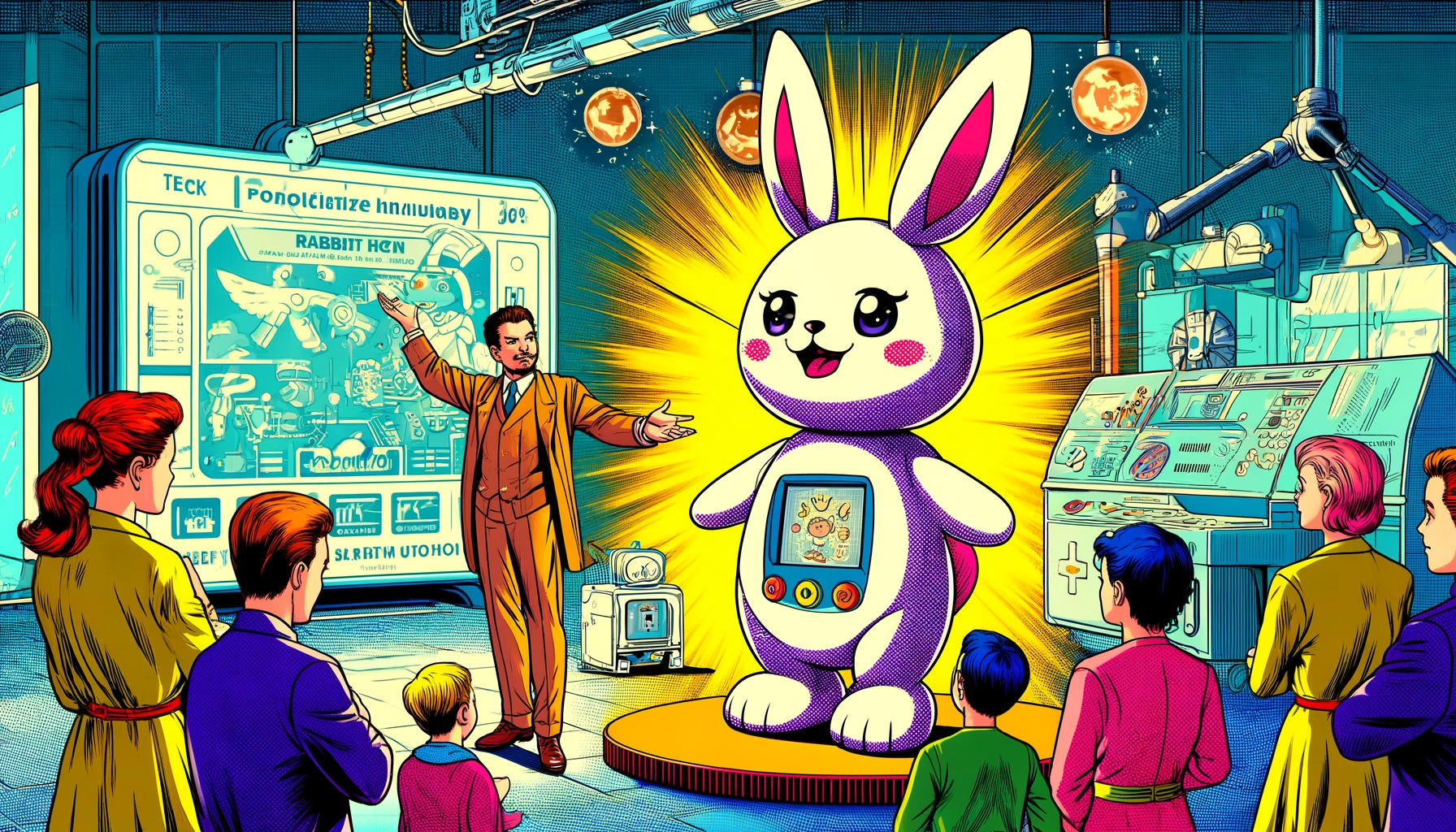In this article, we will delve deep into analyzing the most viral artificial intelligence device that has surfaced so far, the Rabbit R1. This small tamagotchi in red completely changes the way we interact with technology, potentially replacing or being absorbed by mobile phones. It’s evident that the future has been revealed, with over 40,000 units sold in just four days and millions of views across various videos discussing it.
Firstly, let’s understand what this device brings to the market. The best way for me to explain it is by dividing it into two parts: interaction with artificial intelligence and the hardware, essentially a kind of walkie-talkie. To comprehend its capabilities and intentions, let’s watch the advertisement.
Today, what you just witnessed was essentially a lot of people interacting with something in their hands that was pixelated because it was the Rabbit R1 before its official presentation. The crucial point is to understand the promotional messages that provide insights into what the device can do. Let’s explore them one by one. “Order me an Uber and get me a podcast for entertainment. Oh, and let everyone know I’ll be late.” As you can see, this person asks the device to request a taxi, play a podcast, and notify others. This showcases the Rabbit’s multi-action capability. With a single click of a button on the walkie-talkie, we can instruct the AI to perform all these tasks.
- “It was delicious; order the ingredients to make it again tomorrow.” In this example, the company wants us to see that the tamagotchi will be with us constantly, engaging in an ongoing conversation. We tell it, “It was delicious,” referring to something it should remember, and it automatically suggests buying ingredients to recreate the dish. This implies that the device can handle shopping on our behalf, based on its memory of our past actions.
- “Look at what I’m doing and process all my images from today.” This is impressive. Someone in front of a computer instructs the device to observe their actions and process all the images. It indicates automation of tasks.
- “Find us a good restaurant nearby and take us there.” Two people discussing where to eat, with one asking for a restaurant recommendation and the other requesting transportation. It demonstrates the AI’s understanding that we not only want restaurant suggestions but also assistance with transportation. The level of independence given is notable; it tells the device to take them there without specifying the mode of transportation, showing Rabbit’s autonomy in decision-making.
The mission of Rabbit is to create the simplest computer possible by eliminating the current app-based systems. Jessie Lee, the CEO, presented this brilliantly. I recommend watching the 25-minute presentation as it’s a marketing masterclass. It starts by discussing the limitations of current app-based systems on phones and how they are not entirely practical. Rabbit aims to address this by introducing a simplified model.
According to Jessie, the next step in AI is here to save us from the limitations of current language models like Alexa and Siri. While they understand well, they struggle with executing actions. Rabbit aims to bridge this gap. The presentation then delves into the software, which is divided into two parts. Regardless of the device’s current software, be it Apple iOS, Android, Windows, or any other, they share a common element – the interface. Rabbit introduces the concept of Large Action Model (LAM), differentiating it from Language Models (LM). LAM not only understands interfaces like LM but can also take actions.
They started testing the software, and it worked so well that they decided to create hardware to complement it. The R1 is a small tamagotchi, simpler than a walkie-talkie, with a talk button, a screen, a 360-degree camera for vision, speakers for communication, and a SIM card for independence from mobile phones. The device boasts a remarkable response time of only half a second, up to 10 times faster than most current voice-based AI systems. This ensures a faster conversational feel with the system.
Jessie demonstrates various functionalities in real-time, showcasing internet connectivity and displaying results on the screen while the speaker provides audible responses. The device goes beyond traditional chat models by incorporating visual elements, presenting graphics and images. The Rabbit Hole, the accompanying software, is crucial, allowing users to log in to all online services, granting permission for the device to perform actions on their behalf, such as ordering food, shopping on Amazon, or hailing a taxi.
Jessie takes it a step further by asking the device to plan a weekend for two in London. The device efficiently searches for flights, rents a car, books hotels, and generates a complete itinerary with restaurant reservations. The user merely needs to confirm or reject the proposed plans. The presentation also highlights the device’s vision functions, showing real-time video processing rather than static images. This capability sets it apart, allowing the device to analyze scenes and even suggest recipes based on the ingredients in the user’s fridge.
While the system promises a lot, skeptics may wonder if there are limitations or if it can handle unprogrammed tasks. Rabbit addresses this by introducing the Learning Lab, where users can teach the device to interact with specific interfaces that are not pre-programmed. It involves a learning process that may not be as straightforward as depicted.
In summary, the Rabbit R1 is a compact tamagotchi powered by the LAM, allowing both direct and complex actions. It features vision capabilities, experimental learning, and operates independently. The price is set at $199, a significant selling point. Would you buy it now?




+ There are no comments
Add yours